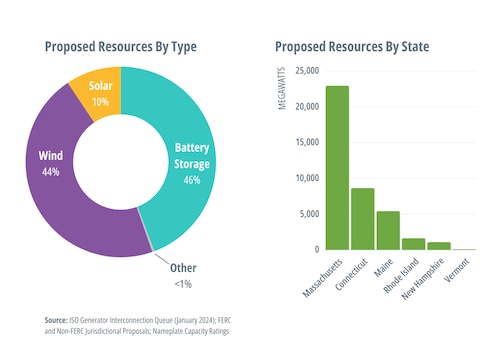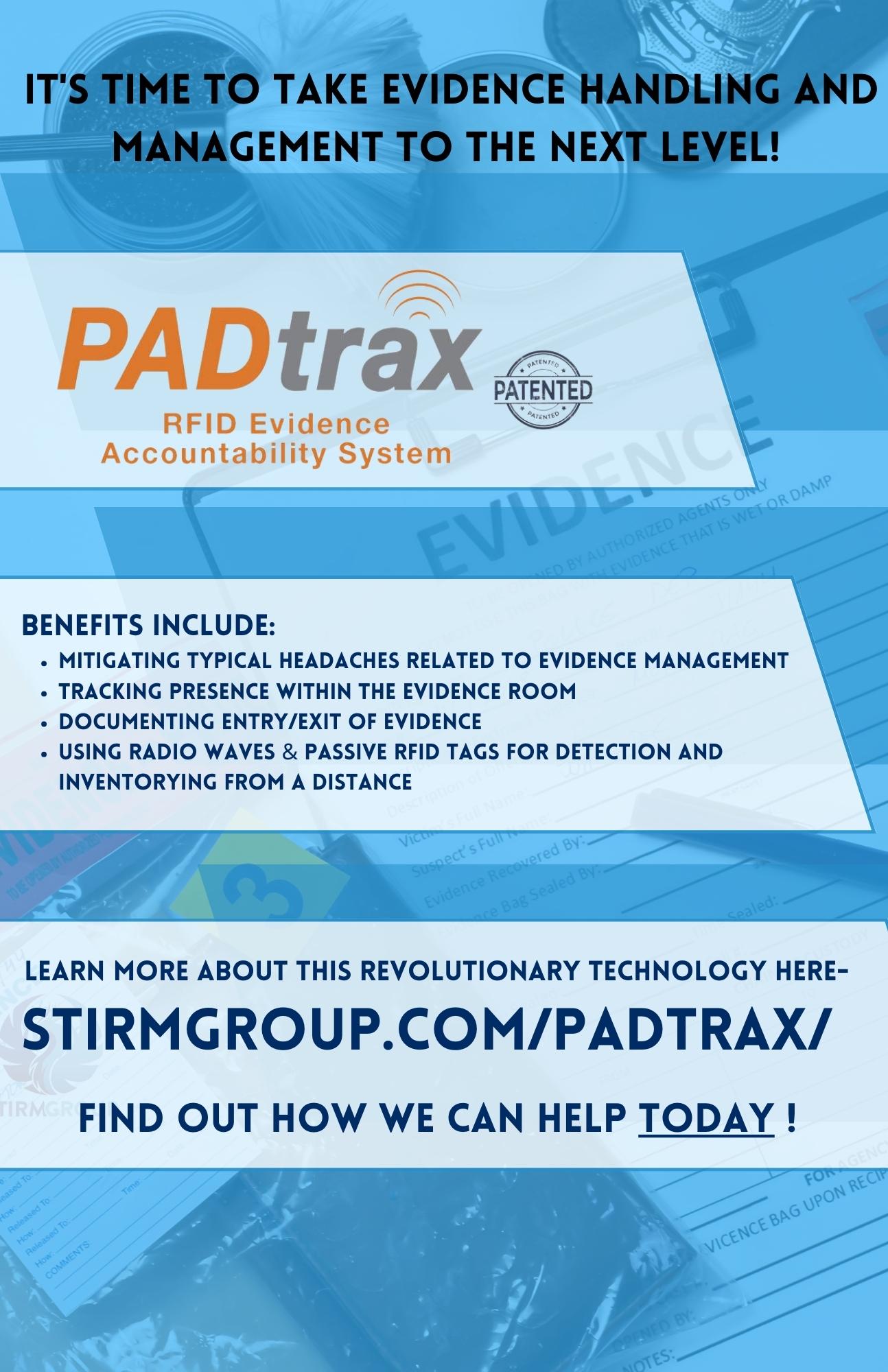Of all the energy resources awaiting future connection to New England’s electric grid, nearly half of them don’t produce energy at all. In fact, they’re stopovers.
The cutting-edge technology of battery energy storage — viewed as a solution to bridge the gap for renewables like wind and solar when the sun isn’t shining and there’s no breeze to be felt — is sweeping parts of the nation, and momentum is fast-growing.
Batteries, made from lithium ion, serve as a storage point for energy that can later be discharged when needed most — directly to the grid during peak demand hours, or to power a single home when the lights go out.
For an average electricity user, that could mean fewer power outages in the future and bill savings as a result of deploying stored energy during peak demand times.
In addition, homeowners and businesses in Massachusetts are getting paid to install battery systems as part of state incentive programs.
From household installations that fit on a garage wall to facilities with batteries the size of shipping containers, the U.S. Energy Information Administration expects battery storage to set a record for annual capacity additions in 2024, an anticipated near doubling from 2023 based on developer plans.
As of November, Massachusetts trailed California, Texas, Arizona, and Florida on a list of U.S. states with the most battery storage capacity installed.
The New York Times recently reported that California, since 2020, has installed more giant batteries than anywhere in the world, apart from China.
Meanwhile, energy industry players and state officials say the Commonwealth is on track to meet a 2025 deadline for its goal of 1,000 megawatt hours of energy storage. In 25 more years, in 2050, that benchmark rises to 6 gigawatts of storage.
Melissa Mittelman, assistant secretary for decarbonization at the Massachusetts Executive Office of Energy and Environmental Affairs, said during a recent webinar the state is “making progress.” At the end of last year, just over half the 1,000 megawatt target had been met, she said.
“The good news is that we have more than four times our target currently under evaluation by electric distribution companies and ISO New England” with a proposed operation date prior to the end of 2025, Mittelman said.
In January, about 46% of projects in ISO New England’s interconnection request queue — a list of energy resources waiting for the regional grid operator’s approval to come online — were battery projects.

A graphic from ISO New England shows the mix of resources in its interconnection request queue, 46% of which are battery projects.ISO New England
A deeper look at those battery proposals, some of which are paired with solar, wind or natural gas, shows more than 150 of them are located in Massachusetts.
The largest battery project currently proposed in the queue is 714 megawatts and would interconnect with a substation at Brayton Point in Somerset, a former coal-fired plant site now being transformed into a landing point for renewable energy when it comes onshore.
For context, the largest battery storage facility in the country is currently 750 megawatts, located at Moss Landing in California.
If approved, the Somerset project has an estimated operation date of 2027.
Though Massachusetts has seen its fair share of solar, it’s not nearly enough to replicate what’s happening on the West Coast, where California draws more electricity from the sun than anywhere else in the U.S.
“The reason (batteries) have taken off in California is there is so much solar,” said Amy Boyd, vice president of policy at the Environmental League of Massachusetts. “In Mass., we have a good amount of solar penetration. We are going to see more, we are going to need more. But I don’t see us having the same.”
Boyd said she sees Massachusetts using storage differently, more for longer-duration needs to get the state through winter weather events, when the technology advances to that level.
Currently, most storage systems can continuously provide power for four hours or less.
The technology comes with controversy around safety concerns for lithium ion batteries, lithium being the mineral that currently dominates the industry. While lithium ion batteries are generally safe, they can present fire dangers if not properly used, stored or disposed of, according to the U.S. Fire Administration.
For example, a lithium-ion battery from an electric scooter exploded in a Chelsea apartment over the weekend, causing a fire that injured five people, state fire officials announced.
It was determined the battery had been left charging for several hours, caught fire and exploded.
How to get paid to install battery systems at your home or business
In order to expand battery system use in the state, residents and businesses can get paid directly via incentive programs for essentially helping out the electric grid.
“Battery energy storage systems are valuable to their owners, but also to the grid,” said Sarah Cullinan, senior director of the Net Zero Grid Program at the Massachusetts Clean Energy Center. “That value from batteries is reflected by revenues and other benefit streams that battery system owners can access.”
In terms of getting consumers to buy into the technology, there are barriers to entry.
While incentives can lower costs, the initial purchase and installation of a battery system is expensive, especially when considering a general recommendation is to pair it with solar panels to maximize investment.
Most homeowners can expect to pay anywhere between $3,000 and $15,000 for a battery storage system, without solar panels.
“Without these state programs, some of these battery systems would not be economically viable,” Cullinan said.

Tesla’s Powerwall+ battery energy storage system.Tesla
There are financing opportunities, however, such as Mass Save’s zero-interest HEAT Loan, where homeowners who enroll a battery in the ConnectedSolutions incentive program can receive up to $25,000 for cost and installation.
There are currently three programs incentivizing energy storage in the state.
ConnectedSolutions is an incentive program run by the sponsors of Mass Save that provides compensation to residential and commercial battery owners who allow their electric distribution company to dispatch their batteries during peak demand days in the summertime.
Tom Ferguson, energy storage programs manager for the state’s Executive Office of Energy and Environmental Affairs, said with the program’s $275 per kilowatt incentive rate, a typical five-kilowatt battery could theoretically generate $1,375 per year in incentive payments.
ConnectedSolutions also allows people to enroll their wifi-enabled thermostats that are connected to either central air conditioning or a heat pump. In this instance, the utility companies can remotely adjust temperatures.
The Solar Massachusetts Renewable Target Program, known as “SMART,” is a billion-dollar incentive program to drive solar development in the state — and there are even bigger incentives if a battery storage system is paired with solar.
SMART is the first program in the country to provide additional incentives for solar installations that include energy storage. If storage is added to a SMART solar system, Ferguson explained, it increases the dollar per kilowatt hour incentive the owner gets paid.
Taking effect in 2020, the state’s Clean Peak Standard is a regulatory tool that offers incentives to clean energy generators and battery storage projects that discharge power onto the grid at times of seasonal peak demand, helping to lower dependance on power plants.
All battery resources receiving incentives from the Clean Peak Standard must demonstrate that they’re charging off clean energy.
Ferguson said the first-in-the-nation standard has been a “driving incentive” for the deployment of larger battery storage projects in the state. The state’s Department of Energy Resources has estimated the standard will save $710 million and reduce carbon dioxide emissions by 560,000 metric tons over 10 years.






